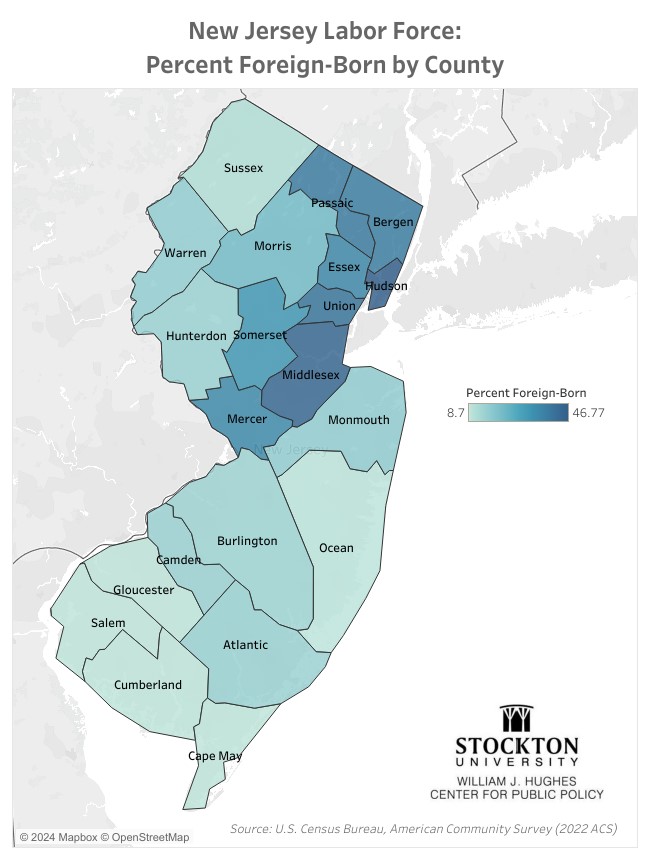Data: N.J. Immigrants Have Higher Labor Participant Rates Than Natives
Galloway, N.J. —Foreign-born residents are a critical part of the New Jersey workforce and participate in the labor force at higher rates than native-born residents, according to data released today by the William J. Hughes Center for Public Policy at Stockton University.

Nationally, foreign-born workers accounted for a record-high 18.1% of the U.S. civilian labor force in 2022, often working in professions with the most critical labor shortages like health care and social services. Moreover, a greater percentage of foreign-born workers (65.9%) are either employed or actively looking for work, compared to native-born workers (61.5%).
Stockton Professor of Economics Ramya Devan and Stockton economics student Madison Giusti analyzed the latest available county-level data from 2022 to assess how the New Jersey labor market compares to these national trends.
Some of the key findings include:
- Foreign-born workers accounted for nearly 30% of the New Jersey labor force.
- Hudson County, Middlesex County and Union County are particularly dependent on immigrant workers as they make up over 40% of their labor force.
- Statewide, foreign-born workers have greater labor force participation rates (69.9%) than native-born workers (64.7%). This was the case in 16 out of the 18 New Jersey counties where data was available.
- The gap between the foreign-born and native-born labor participation rates was exceptionally high in Mercer County (14 percentage points) and Atlantic County (10 percentage points).
- Foreign-born software developers are a large part of the workforce in Hudson, Hunterdon and Middlesex counties, where it is the most common occupation for immigrant workers.
“Contrary to the negative perceptions around immigration and its impact on the economy, actual labor market trends suggest it’s a boon,” Devan said. “The data shows that immigrant workers are vital to the New Jersey workforce.”
The data is from the 2022 Census ACS, and foreign-born refers to anyone who is not a U.S. citizen at birth, including naturalized citizens, lawful permanent residents, temporary migrants or refugees, and unauthorized migrants.
You can read the full story and view the data here.


